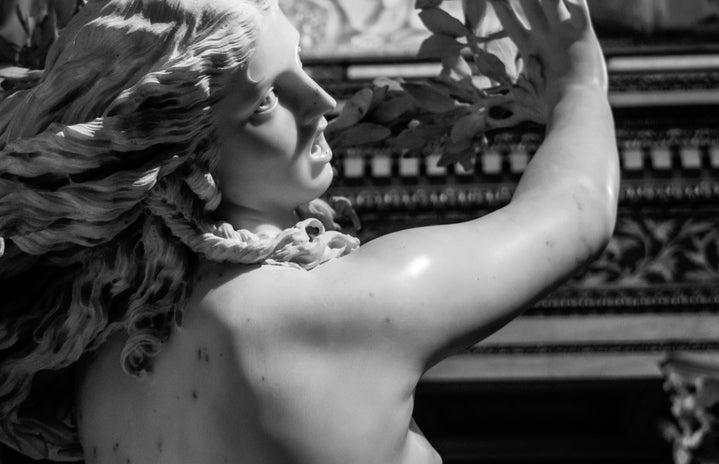If you are looking for something to do for your next weekend or are simply taking a walk into Leeds city centre, please stop at the Henry Moore Institute and visit the current exhibition The Colour of Anxiety. It takes place until 26th of February 2023. Subtitled “Race, sexuality and disorder in Victorian sculpture”, the exhibition questions the rise of colours and its meaning in sculptures from the second half of the nineteenth century. It is quite short (only three rooms) but very impactful.
The use of colours in Victorian sculptures is due less to the scientific discoveries of the time than to an idealised and sexualised conception of the female body, one of the main subjects of representation in art. The point of view adopted by the exhibition is that the social and scientific changes of the era tended to provoke disorder and anxieties, especially among men. The rise of colour would then be the expression of these fears by male artists. The first room of your visit lingers over the slave figure. Drawing parallels with different but similar models, we learn that these sculptures reflect an ancient Greco-Egyptian ideal and, at the time, were designed in a sexualised way, representing the woman as an object of desire. The late Victorian artworks presented also focus on mythological scenes, expressing the “threat” of powerful women. In using tragic, mortal stories and black material, the artists wanted to represent them as monsters to symbolise the dangers of female empowerment.
The Colour of Anxiety is an interesting exhibition which discusses the ways in which late Victorian sculptures have been understood. It offers a relevant reading and brings to light the subjects of tension of the era, such as racial mixing or female emancipation. It allows us to be more sensitive and attentive towards what is represented and, in particular, how it is represented. We can then have another look at the sculptures and pieces of art from this period and be more aware of the power struggles of the time.
For any further details: https://henry-moore.org/whats-on/the-colour-of-anxiety-race-sexuality-and-disorder-in-victorian-sculpture/
Written by: Alice Lardry
Edited by: Uta Tsukada Bright


